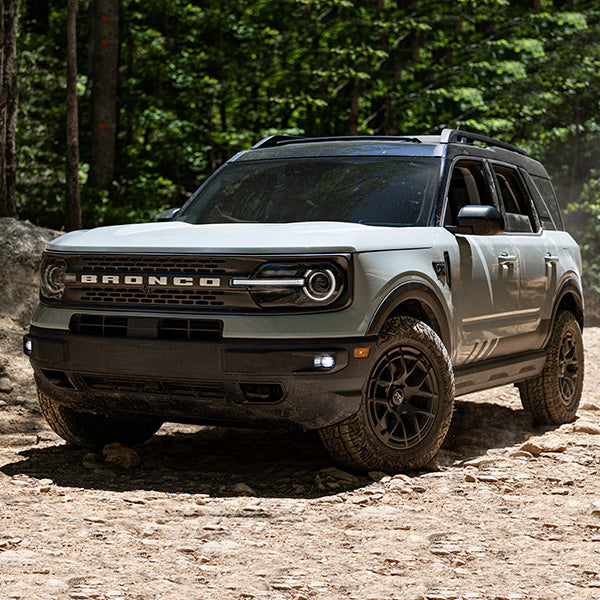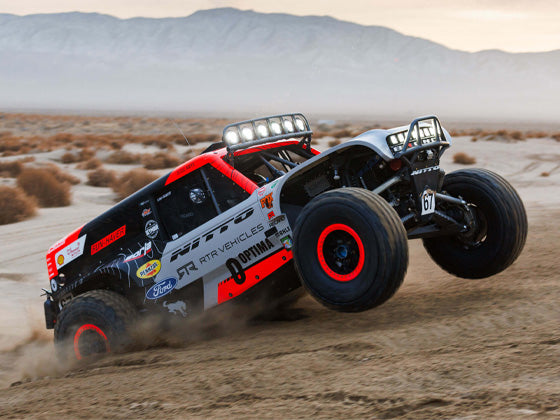Formula Drift champion Vaughn Gittin Jr.’s Mustang acronym is fitting
Formula Drift champ Vaughn Gittin Jr. didn’t grow up lusting after the Mustangs that have since made him famous. Instead, like so many budding car enthusiasts of a certain young age, long before he could drive, he worshipped the Lamborghini Countach displayed on his bedroom wall. A poster of it hung in a place of votive honor. That Countach lust lasted all the way through to one transformative event.
“I drove one,” he said.
Never drive your heroes. After that, you’d think muscle cars would be a natural for Gittin, whose dad was a car salesman.
“He would always bring home cool cars.”
A lot of those were Chevys, including Camaros. But even then, he didn’t switch to rear-drive American enthusiasm right away. Gittin Jr. came of age at the time of the Import Scene, when Honda Civics and other sport compact cars ruled (see the highly realistic "The Fast and the Furious"). The early drifter’s favorite car was the front-engine, rear-drive Nissan 240SX. That’s what Gittin used in his formative drifting years, when he was about 18 to 24 years old. Then ...
“I got my first Mustang in 2005 when they’d just introduced the S197, the big revision, new chassis, new car. I thought it looked so cool,” he said.
“Once I drove the car for the first time, I fell in love with it. I wanted to bring some American muscle into this import-dominated sport and do something different.”
There were advantages.
“A big benefit was how easy it was to make power. I’d been playing with 400 hp (on the SOHC S13 240SX), trying to squeeze horsepower into these things. So with the Mustang being bulletproof and all, it was a lot easier to make power without blowing anything up.”
In 2004, he bought one of those new Mustangs for five grand over sticker and debuted it in Formula Drift competition in 2005. He’s been drifting Mustangs ever since. But Gittin saw more opportunity in the car than just drifting it -- he is a businessman, after all.
“Early on, I was trying to kind of personalize it to my style,” he said. “The approach of the majority of the aftermarket was traditional style, the things you’d see on 1970s Mustangs. I did a lot of soul-searching myself. The way the car was presented by others, it was very traditional, more your father or your grandfather’s styling. So I put some pen to paper and came up with my own vision, which was the RTR.”
Gittin launched the first aftermarket RTR Mustang in 2011. Since then, his company has sold from 50 to 75 a year, and RTR designs have taken off -- everything from turnkey cars to appearance and performance parts and even clothing and other merchandise. It’s an RTR empire!
So when Gittin’s people asked me if I’d like to drive the latest take on the RTR Mustang, I said sure. I got into car #001, a Spec 2 Mustang with suspension and bodywork by RTR. That includes RTR “Tactical Performance” lowering springs, shock/strut package, sway bars and RTR 20x9.5 Tech 7 charcoal wheels with NITTO 275/35 NT555 G2 Ultra High Performance tires, as well as a full appearance package -- from the paint to aerodynamic add-ons.
They are nice add-ons. Despite the long parts list, the car looks almost subtle. There's no monster rear wing stacked up on the back, just an extended spoiler. The rest of the parts are nicely integrated into the overall look. It doesn’t scream for attention, it speaks in a confident voice that probably says something like, “Bro, check it out …”
RTR made no modifications to the engine. The 5.0-liter powerplant underhood was tuned by Ford Performance to yield 460 hp and 420 lb-ft of torque, versus the stock ‘Stang's 435 hp and 400 lb-ft, and that was plenty. I loved the engine right out of the parking lot. It offers power and torque everywhere, and the sound from the RTR “axle-back” exhaust is just the right mix of power and glory from the big V8. Not so loud as to be irritating. It's pleasant, which is a pleasant surprise for a tuner exhaust.
Then I drove off and discovered the suspension setup. While the dampers and sway bars are fully adjustable, the way my press-Mustang had been set up resulted in a little too much … bounce. In fact, it bounced like a golf ball on the cart path. WTH? Why do all tuners do this, I thought. You can’t just lower a suspension, people, you have to tune it to its new lowered height. You have to integrate the whole.
I called Vaughn Gittin Jr.













